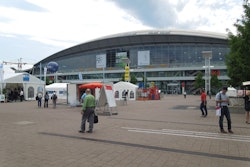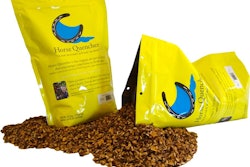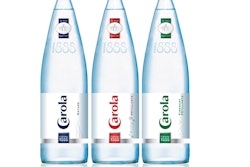
Collaboration is the powerful force it is because it leverages the strengths of many behind a common goal. I’m encouraged by a couple of collaborative efforts in the packaging space that have come to my attention in recent weeks.
The first was announced June 5 by The Coca-Cola Co., Ford Motor Co., H.J. Heinz Co., Nike, Inc., and Procter & Gamble. These five global companies are demonstrating their strong commitment to sustainable manufacturing through the formation of the Plant PET Technology Collaborative (PTC). Described as “a strategic working group,” it will focus on accelerating the development and use of 100% plant-based PET materials and fiber.
PET is used extensively by Coca-Cola, Heinz, and P&G in packaging. Nike and Ford, on the other hand, use PET in such nonpackaging applications as footwear, apparel, and automotive fabric or carpeting. What’s exciting about yoking together three packaging-centric powerhouses with the energies and resources of a shoemaker and a car manufacturer is that nobody knows where it might lead. But the cross-fertilization of ideas from one business sector to another fundamentally different business sector is bound to stir things up. By bundling and leveraging their R&D efforts, these five companies can produce positive change across multiple industries, including the practice of packaging. Coca-Cola puts it this way: “PTC members are committed to researching and developing commercial solutions for PET plastic made entirely from plants. They will aim to drive the development of common methodologies and standards for the use of plant-based plastic, including life cycle analysis and universal terminology.”
“The development of common methodologies and standards” is also very much on the corporate mind of Nestlé S.A., the global food and health-related consumer goods company headquartered in Vevey, Switzerland. And once again, collaboration is the key.
One standard in particular has captured Nestlé’s attention: ISA TR88.00.02-2008, which is the basis of the packaging standard known as PackML. Nestlé’s Bryan Griffen, chair of the OMAC Packaging Workgroup since 2011, has consistently articulated how big a role PackML can play in helping Nestlé improve operational efficiency (see www.bit.ly/pwe00413). And this past May, at The Automation Conference in suburban Chicago, he urged three key stakeholders in the packaging community—machinery OEMs, technology providers, and brand-owning consumer packaged goods companies—to collaboratively embrace and implement the PackML standard as widely and quickly as possible. “One thing about PackML is that if Nestlé is the only one doing it, we lose,” Griffen reminded his audience at The Automation Conference. “In fact, everyone loses. That’s why we’ve taken a more active leadership role in the OMAC Packaging Workgroup to make sure these standards are developed and implemented. Working with Pfizer, P&G, Church & Dwight, and others, we’re standing shoulder to shoulder to say this is what we need to see happening as we go forward.”
The OMAC Packaging Workgroup has even come up with what Griffen calls a “travelling salesman” to demonstrate how effectively PackML can integrate machines whose controllers come from different technology providers. It’s a table-mounted demo consisting of four actuation devices each with a controller from a different vendor. All four communicate freely with each other with no extra PLC sitting on top. The controllers in the actuation units themselves all communicate freely back and forth following the PackML state model and using PackTags. This demo device will make its debut at Pack Expo International in Chicago, says Griffen.
Like the five members of the newly formed PTC, Nestlé recognizes that collaboration can be a rising tide that lifts all boats. My advice? Be on the lookout for such tides whenever they present themselves.

























